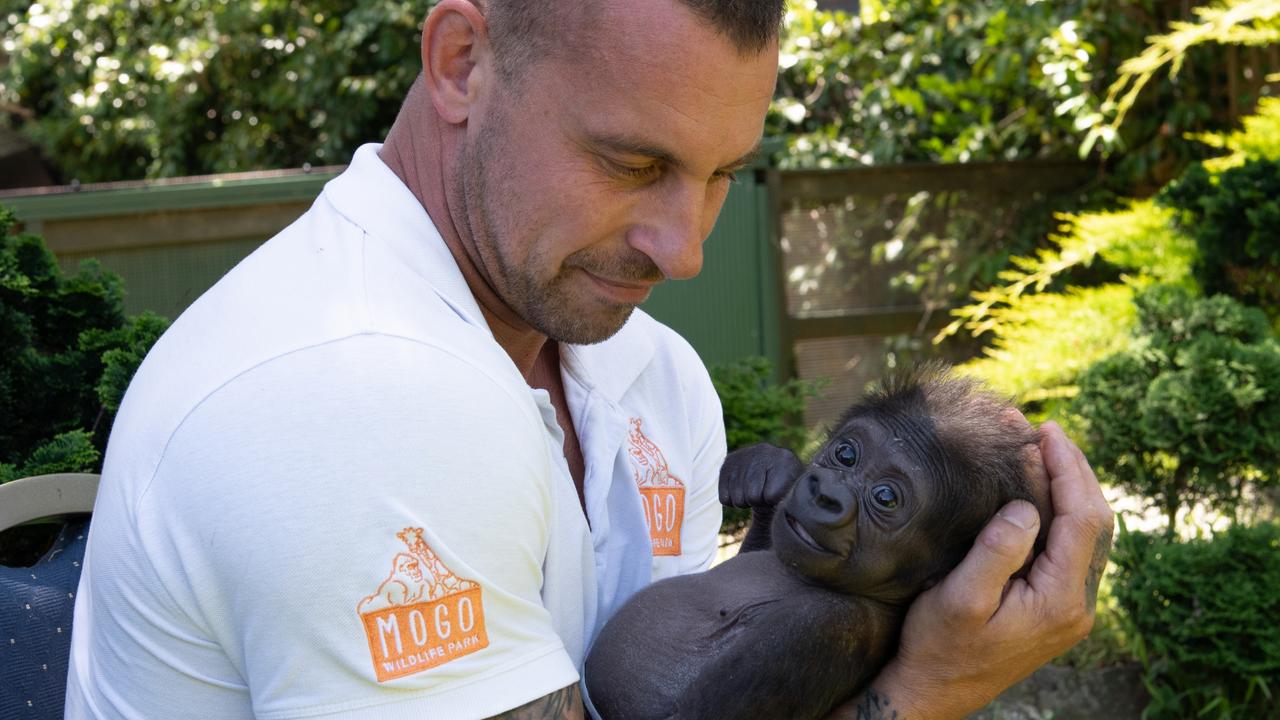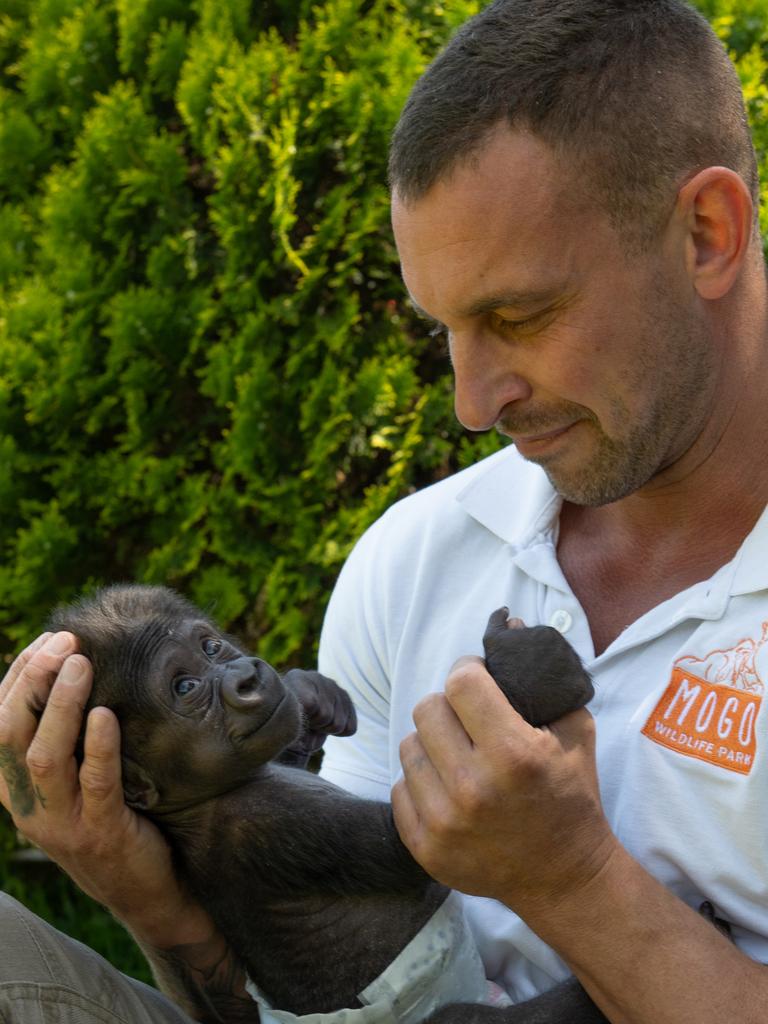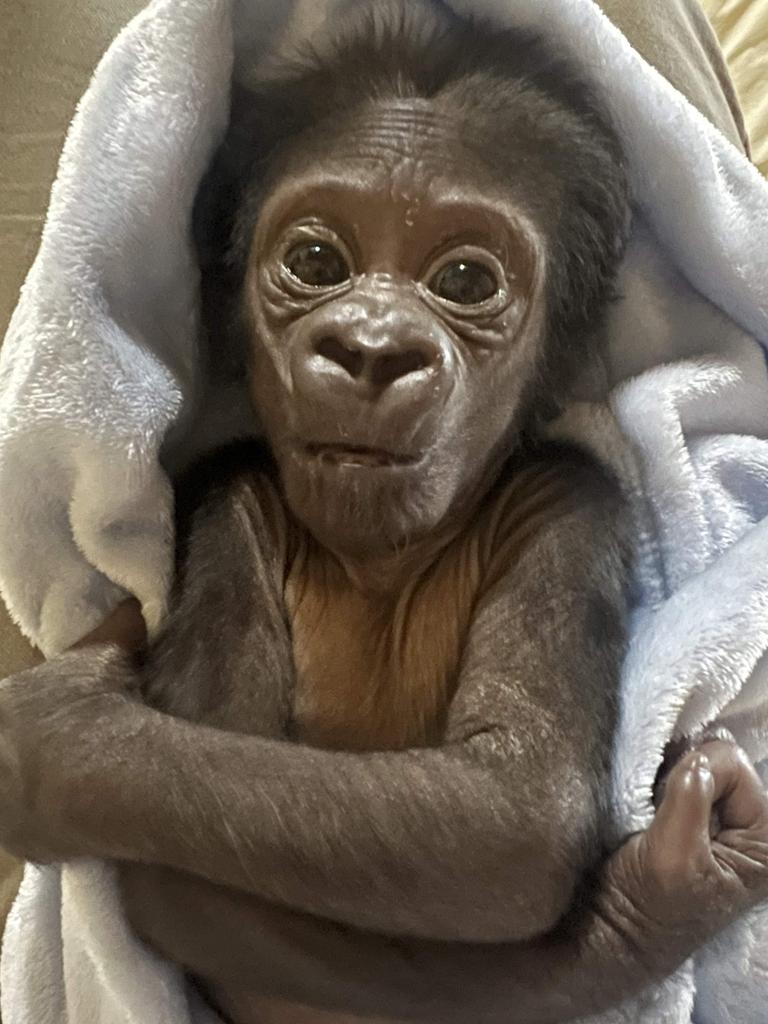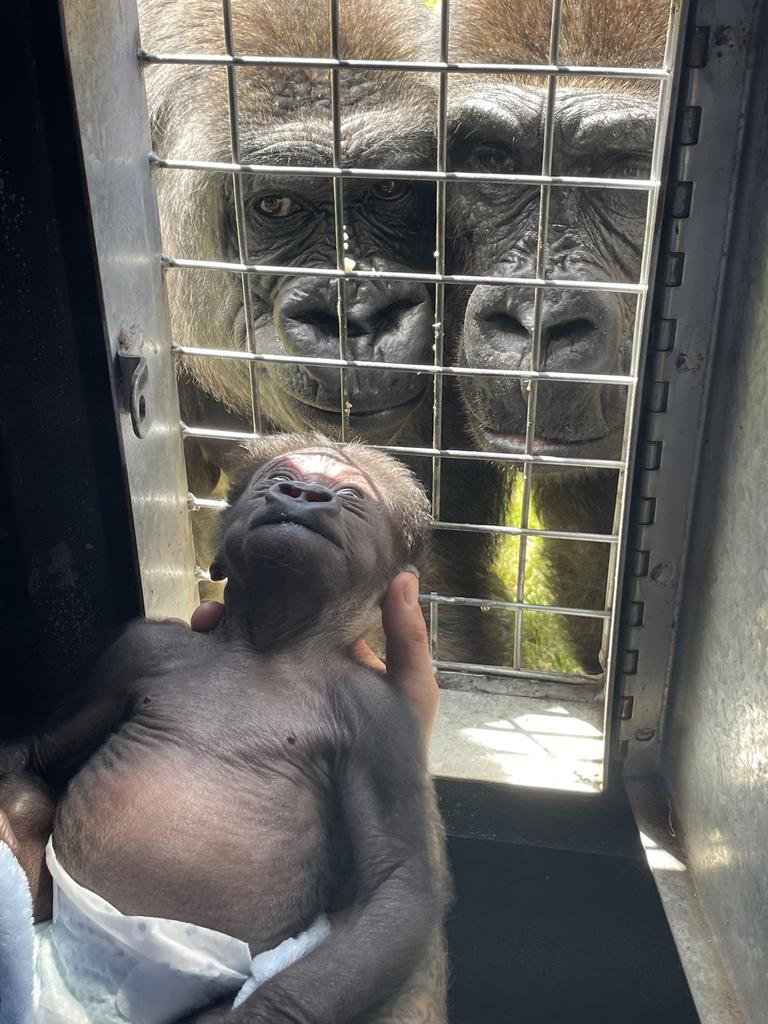Tender loving care turns baby gorilla fears into forever friendship
As the life of newborn baby gorilla Kaius hung in the balance, human carers at an Australian zoo stepped in with skin-on-skin hugs, calming his racing heart and giving him a fighting chance

READING LEVEL: GREEN
A “skin-on-skin*” hug saved a very sick baby gorilla – and now tender loving care from his human “mum” is slowly going to give him back his life.
WATCH THE VIDEO
After his “real” mum rejected him because of her own medical issues, little Kaius’s only hope of survival was the humans caring for him at Mogo Wildlife Park on the NSW south coast.

Kaius had developed sepsis pneumonia* and was gravely* ill when humans had to intervene.
Zookeeper Chad Staples held the tiny primate* on his chest through the night, willing* the tiny gorilla to calm his breathing through comforting hugs his mother, Kipenzi, sadly wasn’t able to give.
She was suffering post-labour* complications and needed surgery.

“I could feel his heart rate drop, his breathing calm down, so the antibiotics* had the chance to kick in,” Mr Staples said. “On the first night I had him, when all the healthcare people had treated him and left, we all knew there was a high chance he would crash overnight.
“Everyone puts it down to skin-on-skin contact and giving him the emotional connection and stability.
“What got his heart rate down and what stabilised his breathing was that contact of him being on my chest, listening to my heartbeat.”

Mr Staples has temporarily put his own life on hold, sharing his bedroom with the three-week-old, who has put on 800g and now weighs 3kg. He feeds Kaius, who sleeps in a baby cot, every two hours and changes his nappy.

He said experts around the world had agreed the best way to encourage Kaius’s reintegration* with his family was to have a principal* carer – mirroring the relationship in the wild of a mother and child.

GLOSSARY
- skin-on-skin: practice of lying a newborn directly on the mother’s bare chest after birth
- sepsis pneumonia: body’s extreme, life-threatening response to a serious lung infection
- gravely: seriously, to a degree that gives cause for alarm and concern
- primate: any mammal of the group including monkeys, apes and humans
- willing: imploring, begging, an urgent appeal for someone to do something
- post-labour: period after childbirth
- antibiotics: medicines that fight bacterial infections in people and animals
- reintegration: process of re-entering a group, family or society after separation
- principal: primary, main, leading, first
EXTRA READING
Zoo welcomes baby elephant to the herd
Baby squirrel monkeys for Taronga
Racehorse royalty Winx give birth
QUICK QUIZ
- Why did little Kaius’ mother reject him?
- What kind of special hug is thought to have made the difference?
- What life-threatening illness did Kaius develop?
- How much weight has Kaius put on and what does he currently weigh?
- Experts believe that having a principal carer for Kaius mirrors what relationship?
LISTEN TO THIS STORY
CLASSROOM ACTIVITIES
1. Gorilla baby
Compare how this baby gorilla is being nursed back to health with how a human baby would be.
Create two columns, one headed Newborn Human Baby and the other Newborn Gorilla. Below the relevant heading, write down how Kaius is being nursed back to health and how you think a newborn baby would be nursed in hospital if their mum was unwell and so were they.
Time: allow 15 minutes to complete this activity
Curriculum Links: English; Health and Physical Education; Personal and Social; Critical and Creative Thinking
2. Extension
How do you think Mr Staples might feel when he has to reintegrate Kaius back into his gorilla family?
Do you think a baby gorilla would be happy living in a human family?
Do you think their connection will remain forever as the gorilla grows up?
Time: allow 10 minutes to complete this activity
Curriculum Links: English; Science; Personal and Social; Critical and Creative Thinking
VCOP ACTIVITY
Imaginative dialogue
Imagine you were there during the event being discussed in the article, or for the interview.
Create a conversation between two characters from the article – you may need or want to include yourself as one of the characters. Don’t forget to try to use facts and details from the article to help make your dialogue as realistic as possible.
Go through your writing and highlight any punctuation you have used in green. Make sure you carefully check the punctuation used for the dialogue and ensure you have opened and closed the speaking in the correct places.


